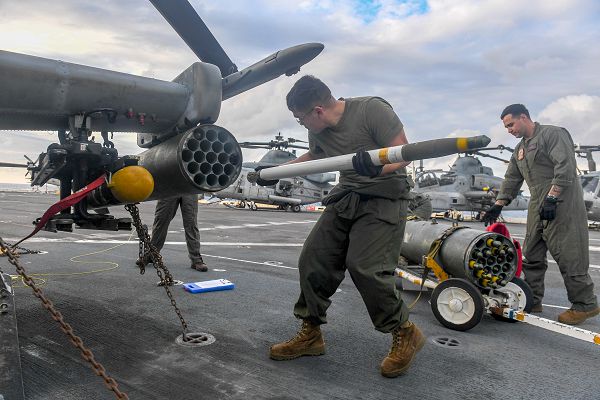
Coral Sea.(July 23, 2023): In this photo by MC2 Matthew Cavenaile, Lance Corporal Alejandro Pelayotafolla, assigned to the 31st Marine Expeditionary Unit, loads a high-explosive rocket onto an AH-1Z Cobra helicopter from Marine Medium Tiltrotor Squadron 265 on the flight deck of the amphibious transport dock ship USS Green Bay. These amphibious warships have a similar design and purpose as an aircraft carrier, but their reduced size allows the Navy to mass produce them. These vessels are used primarily to provide air power for amphibious assaults but they can also shuttle humanitarian supplies ashore in a disaster.
During World War II, the Navy realized there were many missions in which a full fleet carrier group was unnecessary. A much nimbler carrier was needed to support amphibious assaults or to escort convoys of ships across the Pacific. The Navy created “escort carriers” that were the forerunners of today’s amphibious assault ships.
America currently has eleven aircraft carriers, as many as the rest of the world combined, but they are slow and costly to build. These amphibious assault ships almost double the size of America's carrier fleet as they carry helicopters, fighter jets, and even hovercraft for beach landings. They are designed to sail into hostile waters close to shore to deliver significant combat power in the face of determined opposition.
The Navy uses these ships in amphibious ready groups while the Marines dedicate them to expeditionary units and Marine expeditionary brigades.
The ability of these amphibious forces to quickly deliver goods to shore makes them essential to American support for humanitarian efforts around the world. The United States maintains the largest and most capable amphibious force in the world.


